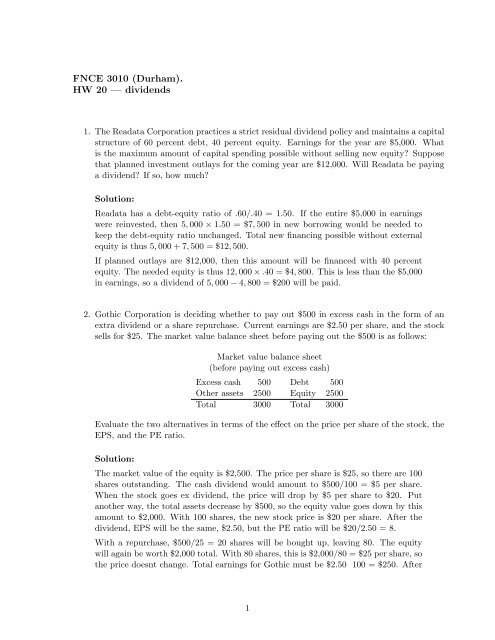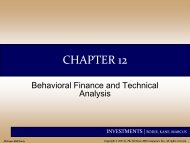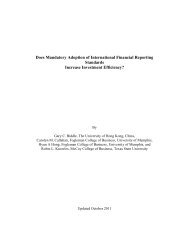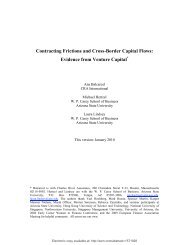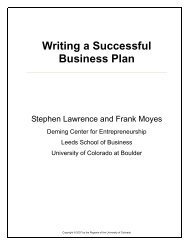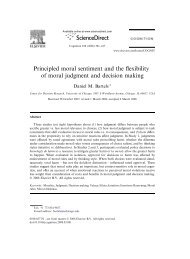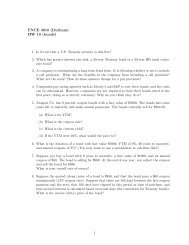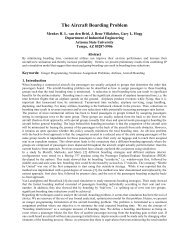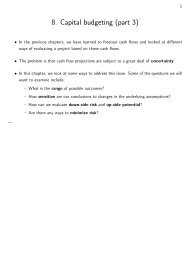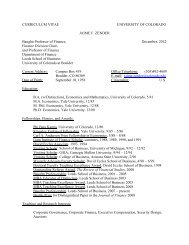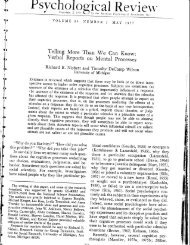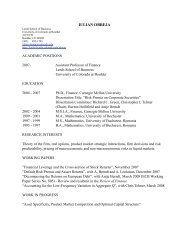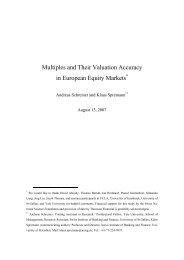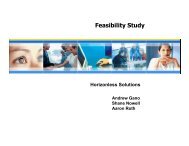Create successful ePaper yourself
Turn your PDF publications into a flip-book with our unique Google optimized e-Paper software.
<strong>FNCE</strong> <strong>3010</strong> (<strong>Durham</strong>).<strong>HW</strong> <strong>20</strong> — <strong>dividends</strong>1. The Readata Corporation practices a strict residual dividend policy and maintains a capitalstructure of 60 percent debt, 40 percent equity. Earnings for the year are $5,000. Whatis the maximum amount of capital spending possible without selling new equity? Supposethat planned investment outlays for the coming year are $12,000. Will Readata be payinga dividend? If so, how much?Solution:Readata has a debt-equity ratio of .60/.40 = 1.50. If the entire $5,000 in earningswere reinvested, then 5, 000 × 1.50 = $7, 500 in new borrowing would be needed tokeep the debt-equity ratio unchanged. Total new financing possible without externalequity is thus 5, 000 + 7, 500 = $12, 500.If planned outlays are $12,000, then this amount will be financed with 40 percentequity. The needed equity is thus 12, 000 × .40 = $4, 800. This is less than the $5,000in earnings, so a dividend of 5, 000 − 4, 800 = $<strong>20</strong>0 will be paid.2. Gothic Corporation is deciding whether to pay out $500 in excess cash in the form of anextra dividend or a share repurchase. Current earnings are $2.50 per share, and the stocksells for $25. The market value balance sheet before paying out the $500 is as follows:Market value balance sheet(before paying out excess cash)Excess cash 500 Debt 500Other assets 2500 Equity 2500Total 3000 Total 3000Evaluate the two alternatives in terms of the effect on the price per share of the stock, theEPS, and the PE ratio.Solution:The market value of the equity is $2,500. The price per share is $25, so there are 100shares outstanding. The cash dividend would amount to $500/100 = $5 per share.When the stock goes ex dividend, the price will drop by $5 per share to $<strong>20</strong>. Putanother way, the total assets decrease by $500, so the equity value goes down by thisamount to $2,000. With 100 shares, the new stock price is $<strong>20</strong> per share. After thedividend, EPS will be the same, $2.50, but the PE ratio will be $<strong>20</strong>/2.50 = 8.With a repurchase, $500/25 = <strong>20</strong> shares will be bought up, leaving 80. The equitywill again be worth $2,000 total. With 80 shares, this is $2,000/80 = $25 per share, sothe price doesnt change. Total earnings for Gothic must be $2.50 100 = $250. After1
the repurchase, EPS will be higher at $250/80 = $3.125. The PE ratio, however, willbe $25/3.125 = 8.3. What is the chief drawback to a strict residual dividend policy? Why is this a problem?How does a compromise policy work? How does it differ from a strict residual policy?Solution:The chief drawback to a strict dividend policy is the variability in dividend payments. This isa problem because investors tend to want a somewhat predictable cash flow. Also, if there isinformation content to dividend announcements, then the firm may be inadvertently tellingthe market that it is expecting a downturn in earnings prospects when it cuts a dividend,when in reality its prospects are very good. In a compromise policy, the firm maintains arelatively constant dividend. It increases <strong>dividends</strong> only when it expects earnings to remainat a sufficiently high level to pay the larger <strong>dividends</strong>, and it lowers the dividend only if itabsolutely has to.4. The balance sheet for Cherry Pie Corp. is shown here in market value terms. There are5,000 shares of stock outstanding.Market value balance sheetCash <strong>20</strong>,000 Equity 175,000Fixed assets 155,000Total 175,000 Total 175,000The company has declared a dividend of $1.50 per share. The stock goes ex dividendtomorrow. Ignoring any tax effects, what is the stock selling for today? What will it sellfor tomorrow? What will the balance sheet look like after the <strong>dividends</strong> are paid?Solution:The stock price is the total market value of equity divided by the shares outstanding,so the current stock price is:P 0 = 175, 000/5, 000 = $35.00Ignoring tax effects, the stock price will drop by the amount of the dividend, so:P ex = 35.00 − 1.50 = $33.50The total <strong>dividends</strong> paid will be $1.50 per share times 5,000 shares = $7,500.The equity and cash accounts will both decline by $7,500.2


